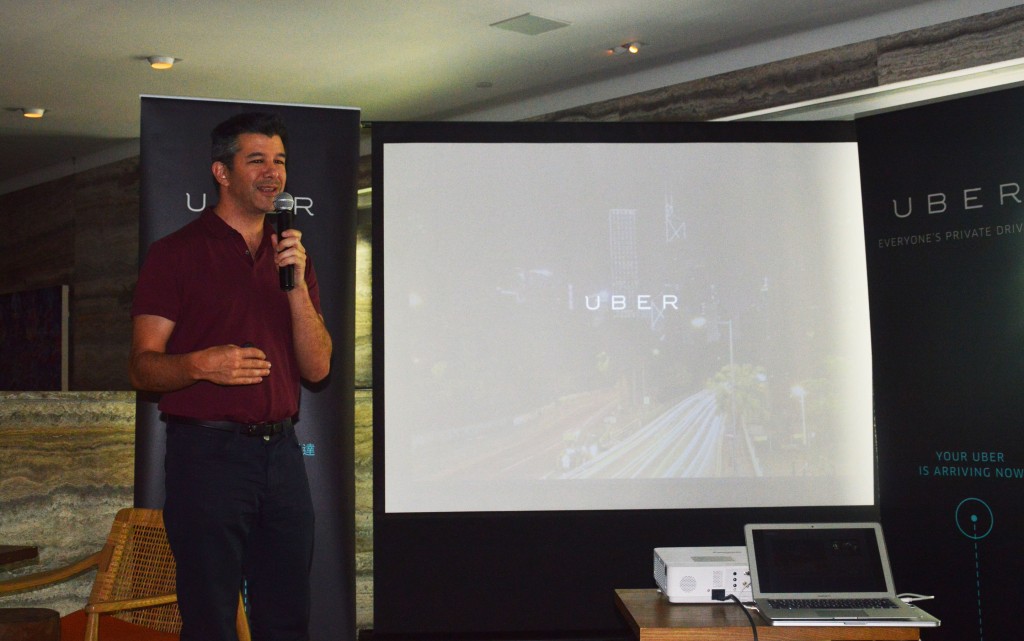
Travis Kalanick, CEO, Uber, speaking at the launch of the app in Hong Kong
[UPDATE: #ubericecream is happening today in Hong Kong. Log onto Uber App and you can order 5 cups of ice cream for $150 and they will deliver it to your office]
If you’re bored of travelling in the crowded subways or slow trams, and want to revel in the pleasures of a luxurious private car instead, Uber has finally arrived in Hong Kong.
The taxi-hailing app announced its entry into the teeming streets of Asia’s financial capital in a media launch on yesterday. In a city, where the ubiquitous red urban taxis are a popular means of transport, Uber hopes to attract the discerning traveller with its reliable and efficient services.
“We have all got used to one option when it comes to transport, even in a stylish city like Hong Kong. For us it is about [offering] choice,” said Uber’s CEO, Travis Kalanick at the press launch.
The official launch in Hong Kong comes after a four-week trial period, which saw celebrities like the fashion model Amanda Strang and actor Carl Ng using the luxury service. Previously, Uber cars were also seen zipping around the streets during the Hong Kong Sevens in March.
The San Francisco-based start up has been rapidly expanding its presence in Asia, which first began with its cars driving into Singapore last year. With a recent launch in Beijing, it is now present in five Chinese cities and several cities in India along with other places like Bangkok, Tokyo and Jakarta.
Launched in 2009, Uber doesn’t own any cars and neither does it employ drivers. It partners with licensed limousine companies and connects riders with these vehicle operators. Through a slick smartphone app, users can book their preferred private sedan and pay via credit cards. Mercedes-Benz S-class, Toyota Alphard and Nissan Elgrand are currently on the menu in Hong Kong. Hiring an Uber car costs around 70 percent more than traditional cabs: the company’s official website lists a basic fare of HK$35 plus HK$2 per minute and HK$9.32 per kilometer.
With its simple ordering technique and multilingual drivers, Uber is also gaining traction among the local Chinese.
While the ‘on-demand’ cars can be a respite for Hong Kongers during rush cars, they also provide an extra income for cab drivers. “The taxi business does not pay well and therefore the quality experience is not that great,” said Kalanick.
The company also organises regular initiatives to spur engagement. During the Chinese New Year, it provided ‘on-demand’ lion dances. Today, it is attracting everyone with a sweet tooth by serving ice creams in Hong Kong and other cities across the world.
While the opportunities are plentiful, regulatory hurdles, rickety infrastructure and traffic snarls are not the only challenges for the company in Asia. Apart from disrupting street hails, Uber will also have to compete with the host of similar taxi-booking apps already operating in the region. In addition, since the company liaises with existing vehicle operators in the city, who are given a fixed number of permits by the government, there are limits to the number of cars that it can hire.
However, Sam Gellman, head of Asia expansion for Uber, isn’t worried. “We’ll see what happens. Right now we’re growing,” he said.
With presence in over 140 countries and plans to enter more markets, Uber’s drive, for now at least, seems to be sans any bumps.


